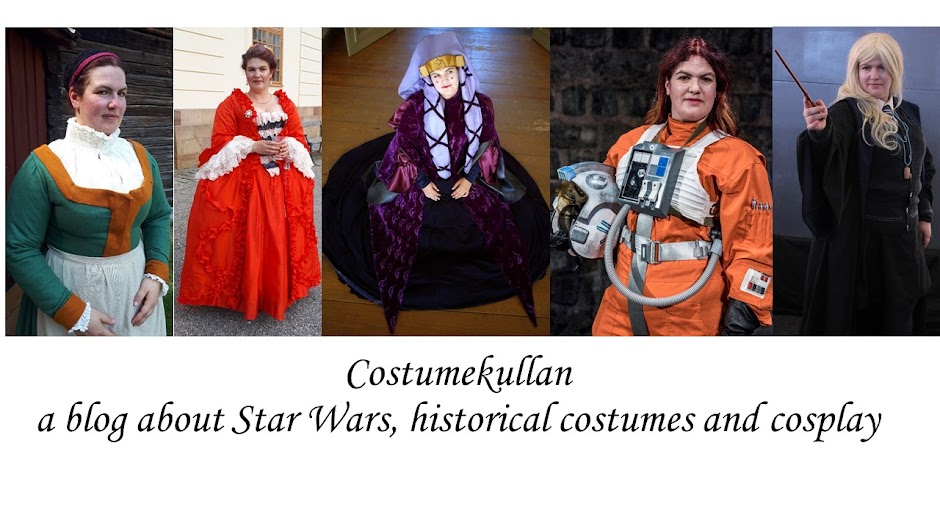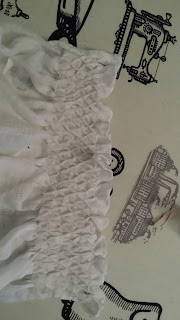Now over Easter I decided to work away on some costume projects, and first of all I decided to paint my X-wing helmet. This is my third rebel pilot helmet, and I always want them to symbolize something.
For my first helmet (a Y-wing helmet that at the time was the only option for A-wing pilots) I drew inspiration from medieval history and took the colours and criss cross pattern from my the coat of arms of two families, while I had the th symbol for the Royal Handmaiden Society on the side. I paid a person to make this helmet for me.
My second helmet, a proper A-wing helmet, was inspired by Falun and Dalarna. With Dalecarlian blue and copper detailing. I painted the base colours and then I asked my mother to make the traditional kurbit motifs.
For the X-wing helmet I first of all decided that I had to do it myself, which meant that I had to make it fairly simple. I really don't like painting and drawing, it's simply not for me. Then I decided that I wanted to make a helmet symbolizing my love for winter and skiing. The colour scheme would be grey/silver with blue accents, but how could I come up with a symbol for skiing that still looked like it belonged in the Star Wars galaxy?
This was the solution. It was the logo for the world ski championships in Falun 1993, and since my father was the one running the organisation my childhood was more or less based around them. The logo is both an F, for Falun, and a stylized ski jumper. Unfortunately my mother had thrown out the remaining stickers from '93 that we had, otherwise it would have been easy to put them on instead of painting the logo.
I started out with marking the areas that I wanted to be silver and used masking tape to make sure I wouldn't paint outside of them. Unfortunately it turned out that the silver paint that I had bought was too sheer and white, thankfully I found that I had a few drops of colour called "tin" left. So I really used the last drops of paint to make the helmet grey,
With the helmet kit I had gotten quite a few decals. I would have preferred them to be blue, but I'd rather have a good looking rebel logo in black than a bad one in blue. The decals on the mohawk and the yellow and red marks were also included, and I've put them on in a similar fashion as the one worn by Wedge Antilles. I can't draw a straight line if my life depended on it, so the ski jumper isn't as crips as I would have liked him to be. BUt on the other hand I feel that it looks like one of those flags you can paint on your cheeks when you are on sports competitions, so it still fits.
As a top layer I took the silver paint that had been too sheer and dotted it all over the painted surfaces. I felt that it gave the impression of a layer of frost over the helmet. It also dulled the sheen of the paint.
To weather the helmet I dotted some black paint. Then I took a wet kitchen towel and used two fingers to press and smear out the paint. This makes it look very much like finger prints. While painting I had also tried to notice where I held the helmet. Those were areas where I weathered it a bit extra, to make it look like it's been carried a long.

































